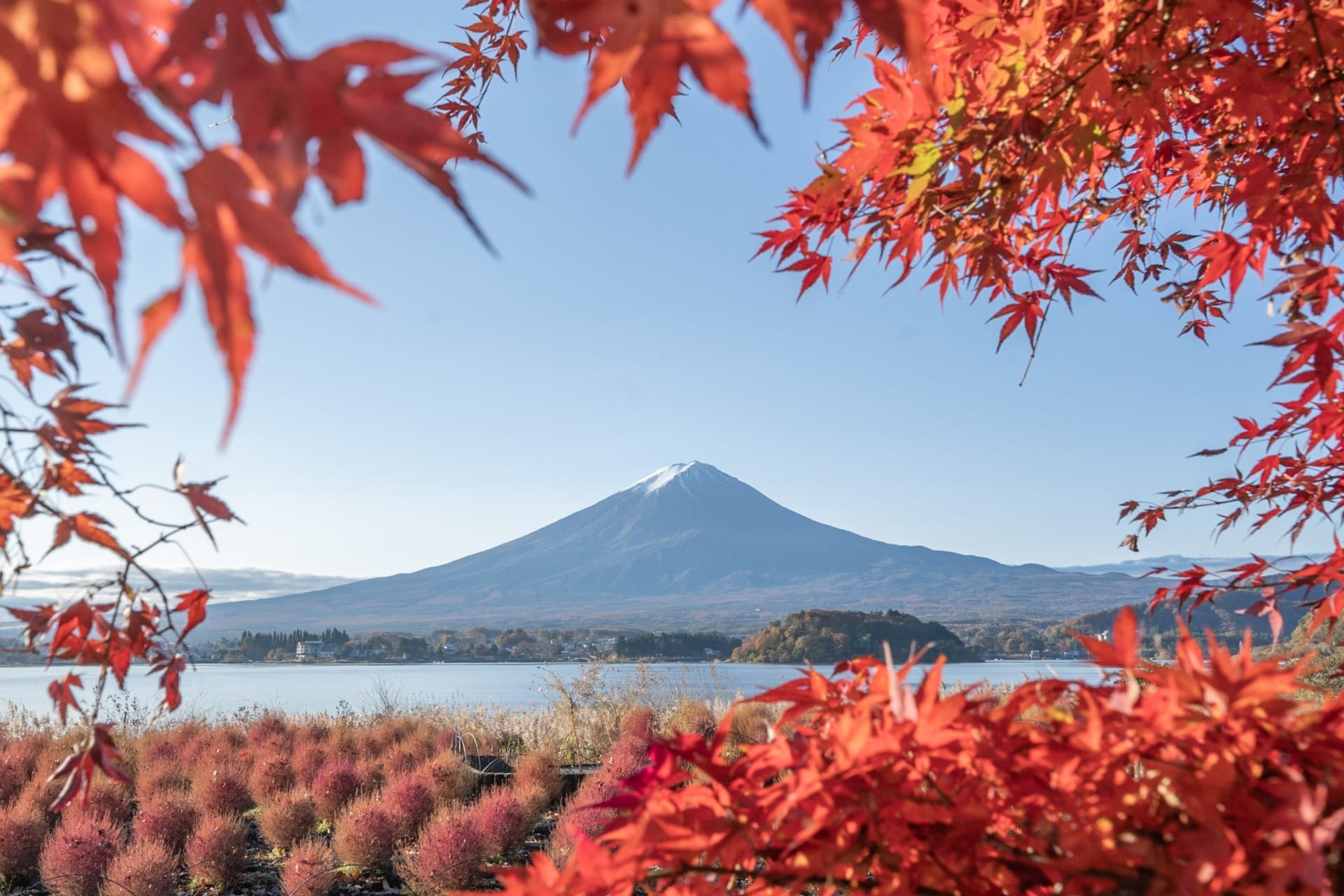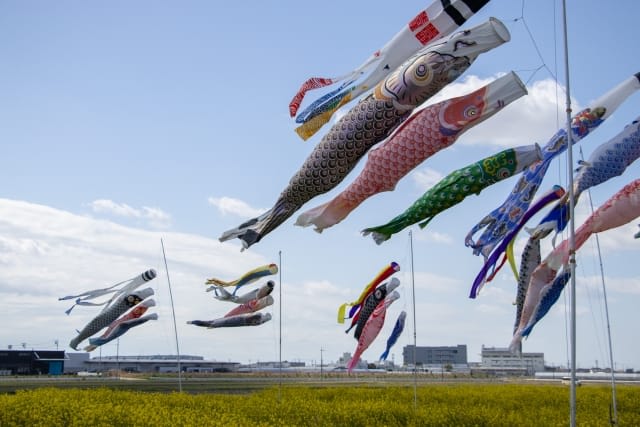The Ultimate Guide: 16 Best Mt. Fuji Photo Spots for 2025 w/map
Mount Fuji, a symbol of Japan, attracts countless tourists who visit Japan specifically to witness its majestic presence. However, given Mount Fuji's massive size and the numerous tourist attractions scattered around its vicinity, we've created this guide to help you explore the Mount Fuji area efficiently.
Additionally, Magical Trip, which won the #1 spot for all tours on Tripadvisor in 2024, has recently launched the Mount Fuji tours.

The "Mt. Fuji Full-day Nature Guided Tour with a Private Chartered Car & Guide" offers a stress-free experience exploring the Mount Fuji area, complete with private car transportation from Tokyo.
Even if you have limited time to explore the Mount Fuji region, this tour allows you to visit all the must-see spots with detailed guidance from your tour guide.
If you're interested in efficiently experiencing the essential locations while gaining deep insights from a knowledgeable local guide who knows the area inside and out, we highly recommend joining the "Mt. Fuji Full-day Nature Guided Tour with a Private Chartered Car & Guide."
We hope you'll have a wonderful time experiencing everything Mt.Fuji has to offer by joining a Magical Trip tour!
Introduction
As a Sony mirrorless camera enthusiast, I have been visiting Mt. Fuji for photography for over a decade. From my experience, I can say that the charm of Mt. Fuji is endless. Japan's symbol, which changes its expression like a different mountain depending on the season, weather, and time of day, is a presence that eternally captivates photographers' hearts.
Certainly, there are times when Mt. Fuji doesn't show its face for days due to unfavorable weather. There are also seasons when popular spots get crowded with tourists. But including such "luck" is what makes encounters with Mt. Fuji special. I'll introduce 16 carefully selected spots that I've discovered over the past decade, along with the best seasons and photography tips.
Centered around the so-called Fuji Five Lakes area, including Lake Kawaguchi, Lake Yamanaka, and Lake Shoji, I'll also introduce some hidden gems known only to insiders. I'll provide advice based on my experience as concretely as possible.
Table of Contents
・Basic Information for Mt. Fuji Photography
・How to Access the Mt. Fuji Area from Tokyo
・16 Great Photo Spots Around Mt. Fuji
・Best Practices for Photography
・Frequently Asked Questions
Basic Information for Mt. Fuji Photography

First, let me introduce the basic information you should know when planning your Mt. Fuji photography trip.
Mt. Fuji is an iconic mountain in Japan, standing at an elevation of 3,776 meters. Located about 100 kilometers southwest of Tokyo, it's accessible by car or train in about 2-3 hours. The Fuji Five Lakes area, in particular, is dotted with photo spots loved by many photography enthusiasts.
The best season for photography is from November to May. During this period, the mountain peak is covered in snow, allowing you to capture more impressive photos. In my experience, there may be days when Mt. Fuji is not visible due to weather conditions, so if you want to ensure good photos, I recommend staying for 2-3 days.
How to Access the Mt. Fuji Area from Tokyo
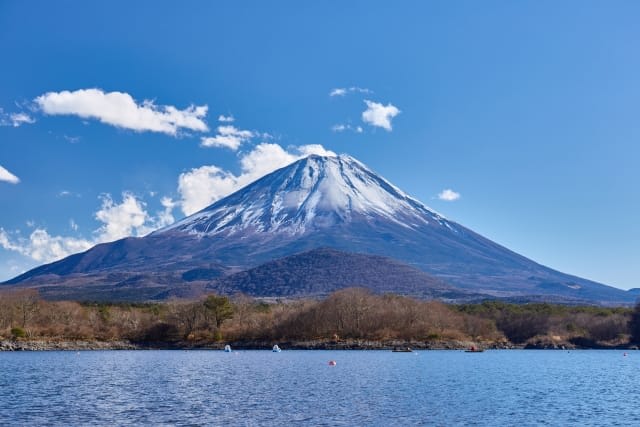
Using the express train called "Fuji Excursion" from Shinjuku Station, you can reach Kawaguchiko Station in about 2 hours. This train offers enjoyable views from the window and is a comfortable mode of transportation for photography enthusiasts carrying equipment.
Another option is to use the highway bus from Shinjuku Station, which reaches Kawaguchiko Station or the 5th Station in about 2 hours. Buses have the advantage of being more convenient for early morning or nighttime photography.
16 Great Photo Spots Around Mt. Fuji
I'll introduce 16 photo spots that I've carefully selected over 10 years. Each spot has its own charm and shows different expressions depending on the season and time of day. There are so many sights that you can't cover them all in a day's shooting, so I recommend making plans that include overnight stays.
Lake Kawaguchi Area
The Lake Kawaguchi area is where classic Mt. Fuji photo spots are concentrated. If you're trying Mt. Fuji photography for the first time, I recommend starting with this area. It has good transportation access and comfortable accommodation facilities nearby.
Oishi Park

Oishi Park is known as a scenic spot overlooking Mt. Fuji from the lakeshore. What I particularly like is the scenery of cherry blossoms in spring and lavender in summer. The collaboration of flowers and Mt. Fuji adds a picturesque beauty to the photos.
With a free parking lot available, you can easily access it for early morning reverse Mt. Fuji shooting. I recommend arriving before dawn and waiting for the moment when the lake surface is as calm as a mirror. Tripods can be used, so you can take fantastical photos with long exposures.
Kawaguchiko Bridge
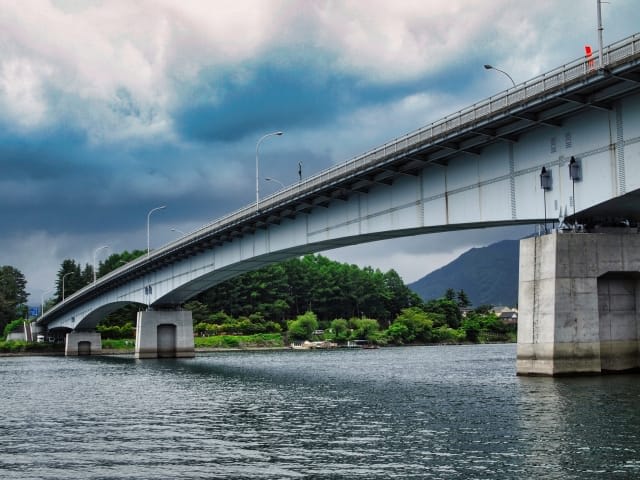
Kawaguchiko Bridge is the spot I visit most frequently for twilight shooting. From the bridge, you can enjoy a panoramic view of Mt. Fuji, and the silhouette of Mt. Fuji dyed in the setting sun is especially breathtaking.
The sidewalk is well-maintained, so you can enjoy shooting safely. There are shooting spots at both ends of the bridge, allowing you to choose the best location depending on the season and weather conditions.
Ubuyagasaki
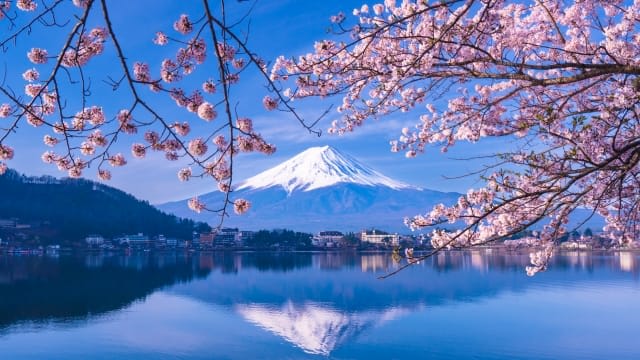
Ubuyagasaki is a special spot I've been visiting since I started Mt. Fuji photography. It's known as a famous place for the reverse Mt. Fuji reflected in the lake surface, and the quiet early morning hours are especially exceptional. A small shrine also stands here, beautifully harmonizing the traditional Japanese atmosphere with Mt. Fuji.
Parking is limited, so I recommend arriving early, especially during popular shooting seasons. In winter, the contrast between the snowy landscape and Mt. Fuji is beautiful, and many of my best shots were taken during this season. On cold mornings when the lake surface freezes, the reverse Mt. Fuji is reflected most clearly.
Nagasaki Park
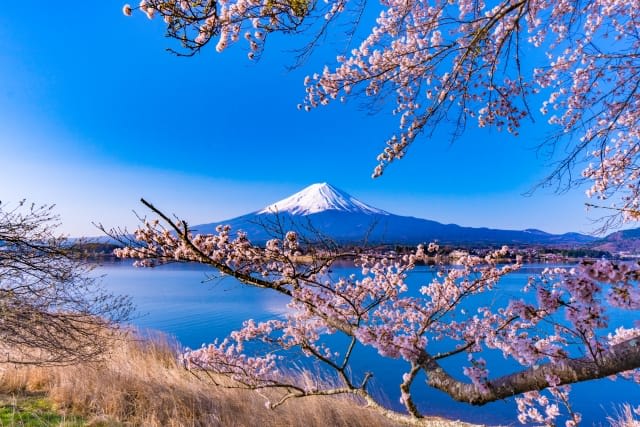
Nagasaki Park is a peaceful shooting spot where you can view Mt. Fuji from the lakeside promenade. You can take your time to consider the composition. I've spent a lot of time here, repeatedly captivated by the charm of the simple composition of Mt. Fuji and the lake.
It's also known as a cherry blossom spot in spring, and the collaboration of full-bloom cherry blossoms and Mt. Fuji represents the Japanese spring landscape. There are various shooting points along the promenade, allowing you to capture Mt. Fuji from different angles.
Kachi Kachi Ropeway
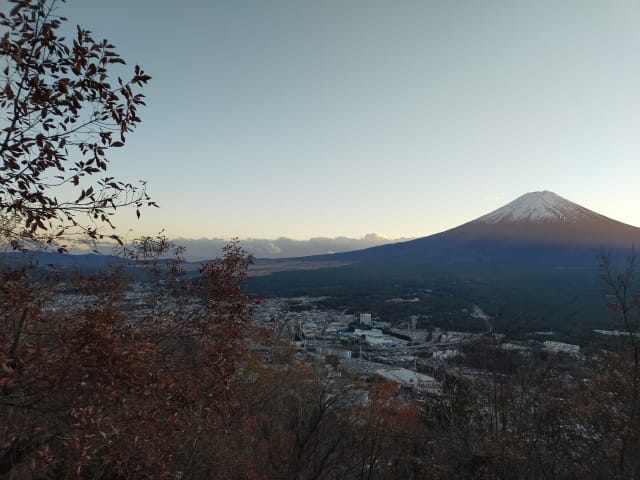
Kachi Kachi Ropeway is a shooting spot accessible by ropeway from a high vantage point. What particularly impressed me was the panoramic view of Mt. Fuji and Lake Kawaguchi from here. The bird's-eye view composition taking advantage of the high altitude has a unique charm that can't be experienced at other spots.
Hiking trails are also well-maintained, allowing you to explore various shooting points depending on your physical condition. There's a café where you can take a break along the way, making it comfortable for long hours of shooting. My favorite is shooting the sunset sinking into Mt. Fuji from the summit at dusk. If the cloud conditions are good, you can encounter an amazingly beautiful scene.
Fujiyoshida City Area
The Fujiyoshida City area is a special place where I can feel the harmony between the lives of local people and Mt. Fuji. The scenery woven by traditional buildings, streetscapes, and Mt. Fuji adds cultural depth to the photos.
Arakurayama Sengen Park (Chureito Pagoda)
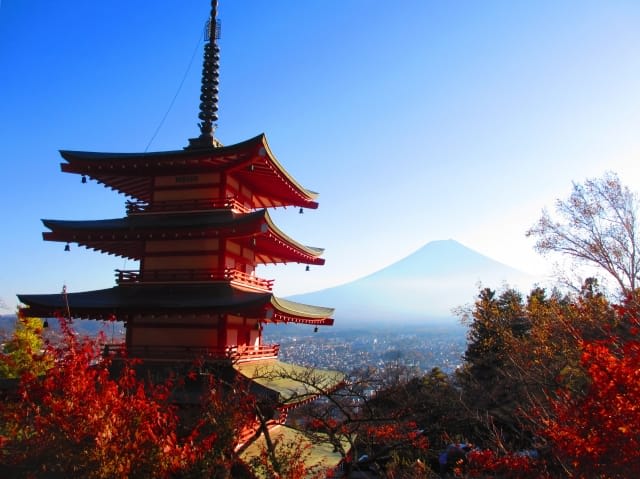
The collaboration of the five-storied pagoda at Arakurayama Sengen Park and Mt. Fuji is a landscape that fascinates photographers from around the world. I still vividly remember the excitement when I first visited here. The cherry blossom season is especially exceptional, with the five-storied pagoda, full-bloom cherry blossoms, and Mt. Fuji - symbolic elements of Japan - all captured in one photo.
You need to climb about 400 steps, but it's well worth it. I recommend aiming for the moment when the early morning light shines through, but be careful with tripod use. It may be restricted during crowded times, so I recommend checking in advance.
Arakurayama Sengen Park is one of the premier photo spots around Mount Fuji. Due to its popularity, there's even a time limit on how long visitors can stay at the viewing spots facing Mount Fuji. While tourist attractions around Mount Fuji are popular for good reason, without knowing the right tips and tricks, you might miss out on some must-see locations.
That's why we recommend the "Mt. Fuji Full-day Nature Guided Tour with a Private Chartered Car," led by guides who know the Mount Fuji area inside and out.
With round-trip transportation from Tokyo included, you can explore all the essential spots around Mount Fuji without any hassle.
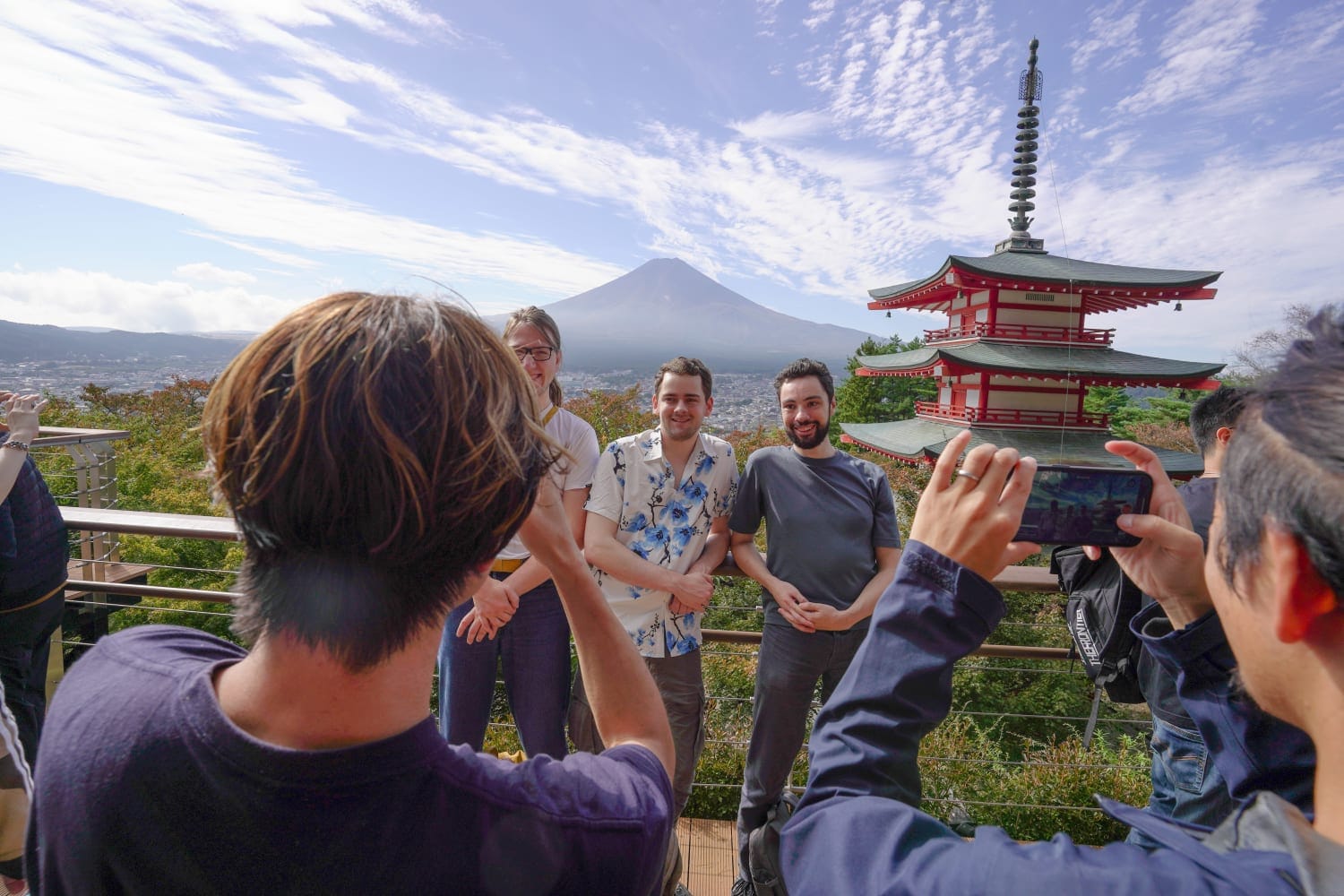
Fujisan Hongu Sengen Taisha Shrine
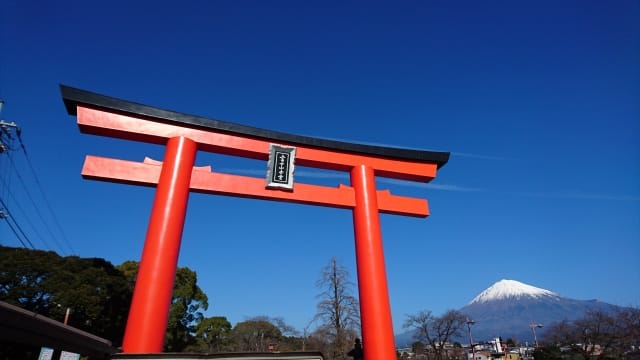
Fujisan Hongu Sengen Taisha Shrine is a special shooting spot where history and sacredness linger. What I find particularly attractive is the composition woven by the majestic great torii gate and Mt. Fuji. This place breathes over 1,000 years of history, and you can feel the traditional beauty of Japan wherever you capture.
You can enjoy scenery in all four seasons, which is also a feature of this spot. My favorite is shooting the combination of lively worshippers and Mt. Fuji during the New Year's visit period. On clear early mornings, you can see a divine scene where Mt. Fuji peeks out beyond the great torii gate.
Fujiyoshida Streetscape

The streetscape of Fujiyoshida is where I can feel the harmony between local life and Mt. Fuji the most. As you walk through the alleys, there are moments when Mt. Fuji suddenly appears in your line of sight, and such casual scenery becomes an attractive photo.
There are plenty of eateries and souvenir shops, so you can enjoy local flavors between shoots. I think the charm of this area is that you can encounter unexpectedly picturesque scenes just by walking around with a camera.
Lake Shoji and Lake Motosu Area
The Lake Shoji and Lake Motosu area is where I feel the essence of Mt. Fuji photography. As it's not as developed for tourism, it's a valuable area where you can shoot Mt. Fuji in its natural state.
Lake Shoji Panorama Observatory

Lake Shoji Panorama Observatory is a scenic spot where you can overlook Mt. Fuji from a high vantage point. What impressed me the most here was the dawn shooting. The lake surface enveloped in silence and the majestic figure of Mt. Fuji illuminated by the morning sun are indescribably beautiful.
You need to walk a bit from the parking lot, but this allows for serious shooting with a tripod in a calm environment. I especially recommend early morning shooting in winter. The clear air and quiet lake surface provide the best shooting conditions.
Mt. Fuji Viewpoint at Lake Motosu

The Mt. Fuji viewpoint at Lake Motosu is famous for being featured on the 1000-yen bill. It's one of the most impressive landscapes I've continued to shoot for 10 years. Especially during the season when morning mist rises, you can capture a fantastical figure of Mt. Fuji.
On days when the water surface is calm, you can also enjoy the reverse Mt. Fuji reflected like a mirror. My favorite is visiting in the early morning of autumn to shoot Mt. Fuji wrapped in autumn leaves and morning mist. This place is a special spot that condenses the natural beauty of Japan.
Lake Yamanaka Area
The Lake Yamanaka area is the highest among the Fuji Five Lakes, and it's a special place where you can feel the majestic figure of Mt. Fuji up close. What I particularly like is the combination of the vast lake surface and the grand view of Mt. Fuji.
Lake Yamanaka Panorama Observatory
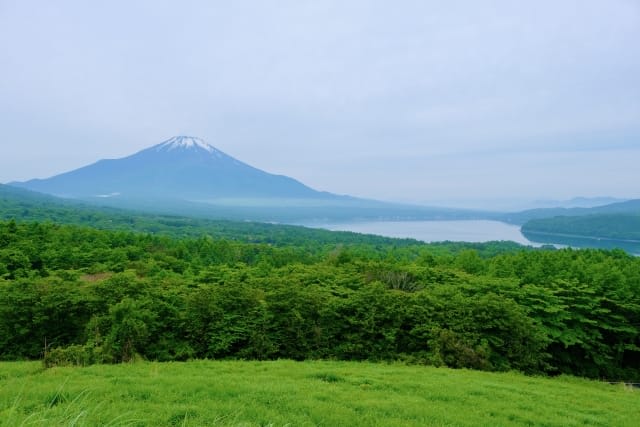
Lake Yamanaka Panorama Observatory is one of the shooting spots I visit most frequently throughout the seasons. From the observatory, you can view Mt. Fuji 360 degrees, and it shows various expressions depending on the season and weather. While there aren't many parking spaces, they are available, so you can feel at ease heading for early morning shoots.
My favorite is the twilight in autumn. The scenery woven by the autumn-colored trees and the silhouette of Mt. Fuji is truly picturesque. On clear days, you can capture the details of Mt. Fuji clearly, and you can enjoy shooting with a telephoto lens as well.
Hana no Miyako Park

Hana no Miyako Park is an attractive shooting spot for the collaboration of seasonal flowers and Mt. Fuji. I especially recommend visiting during the tulip season in spring and the cosmos season in autumn. Various flowers bloom in the vast grounds, and the distance to Mt. Fuji is just right.
It's also popular with families, and you can enjoy shooting while having a picnic. I like to slowly search for compositions while surrounded by the scent of flowers. Photos combining flowers shining with morning dew and Mt. Fuji always become special shots.
Other Unique Spots
The charm of the Mt. Fuji area extends infinitely beyond the major shooting spots. Here, I'll introduce special locations I've discovered through years of shooting experience.
Fuji Shibazakura Festival Venue (Spring Only)
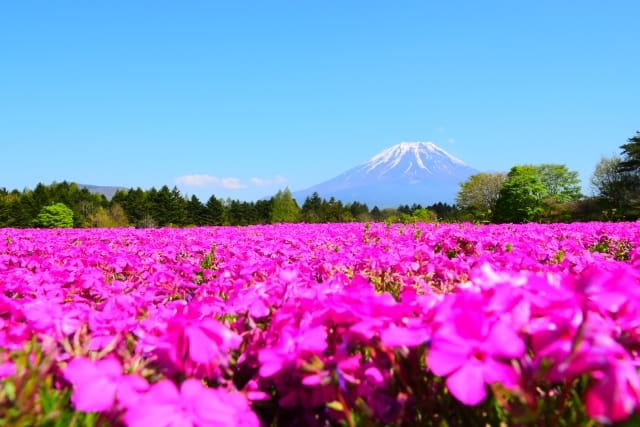
The Fuji Shibazakura Festival is a spring tradition held from mid-April to late May. The sight of a pink carpet spreading out is a special landscape I look forward to every year. About 800,000 moss phlox blooming with Mt. Fuji in the background show a beauty like heaven.
An entrance fee is required, but it's well worth it. However, as it's a popular spot, the surrounding area often gets congested, so I recommend visiting early. I like to visit in the morning and shoot the combination of moss phlox shining with morning dew and Mt. Fuji. At this time, there are fewer tourists, allowing you to enjoy shooting at a leisurely pace.
Lake Tanuki
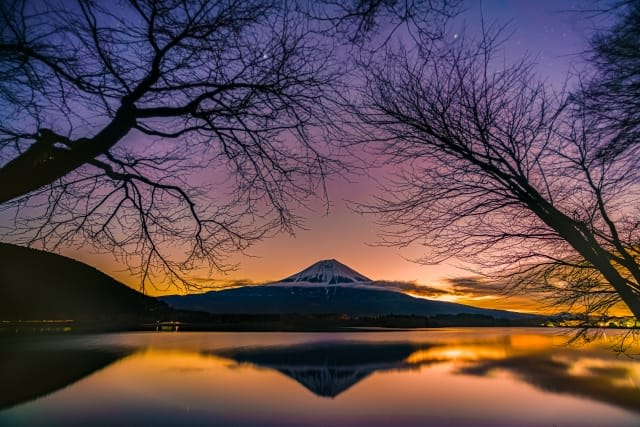
Lake Tanuki is a special spot where you can see Diamond Fuji. A campsite is also attached, so if you want to start shooting before dawn, you can stay overnight.
The lakeside promenade is well-maintained, allowing you to enjoy shooting from various angles. I particularly like this spot during the autumn foliage season. The moment when Mt. Fuji appears beyond the trees dyed in red and yellow reflected on the lake surface is truly a spectacular view.
Shiraito Falls

Shiraito Falls is a beautiful famous waterfall created by underground water from Mt. Fuji. What I find particularly attractive is the delicate flow of water spanning 150 meters in width. While there's no direct view of Mt. Fuji, it's loved by many photographers as a spot where you can most impressively experience the blessings of Mt. Fuji.
It's easily accessible from the parking lot, so even beginners can visit without hesitation. My favorite is during the summer and winter light-up periods when you can shoot fantastical expressions of the falls. I recommend long-exposure shooting, which can express the silky smooth flow of water.
Mt. Fuji World Heritage Center
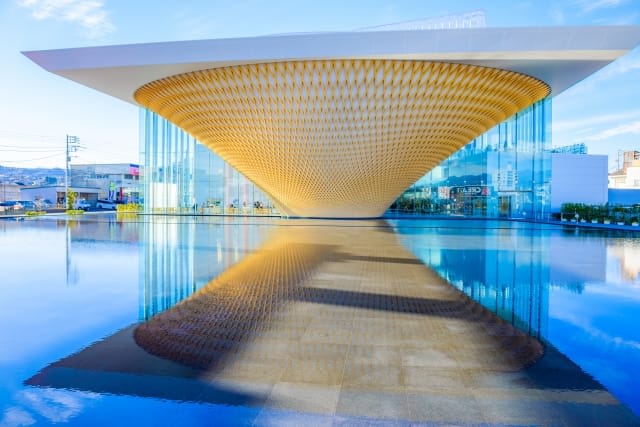
The Mt. Fuji World Heritage Center is a special spot I always visit on rainy days. The creative architecture by architect Shigeru Ban, which images Mt. Fuji, is itself an attractive subject. From the observation hall, you can see the actual Mt. Fuji on clear days.
You can enjoy various photo shoots inside the building while learning about the history and culture of Mt. Fuji. There are many restaurants in the surrounding area, so you can enjoy local gourmet food between shoots. I recommend knowing this spot as a backup plan for rainy days.
While the tourist spots I've introduced so far are my top recommendations, they're located in different areas, which might make it challenging to plan your own itinerary. That's why I recommend joining the "Mt. Fuji Full-day Nature Guided Tour with a Private Chartered Car," led by guides who know the Mt. Fuji area inside and out.
The tour includes round-trip transportation from Tokyo and takes you to all the must-see spots around Mt. Fuji. Some routes even include visits to Oshino Hakkai and Arakurayama Sengen Park!
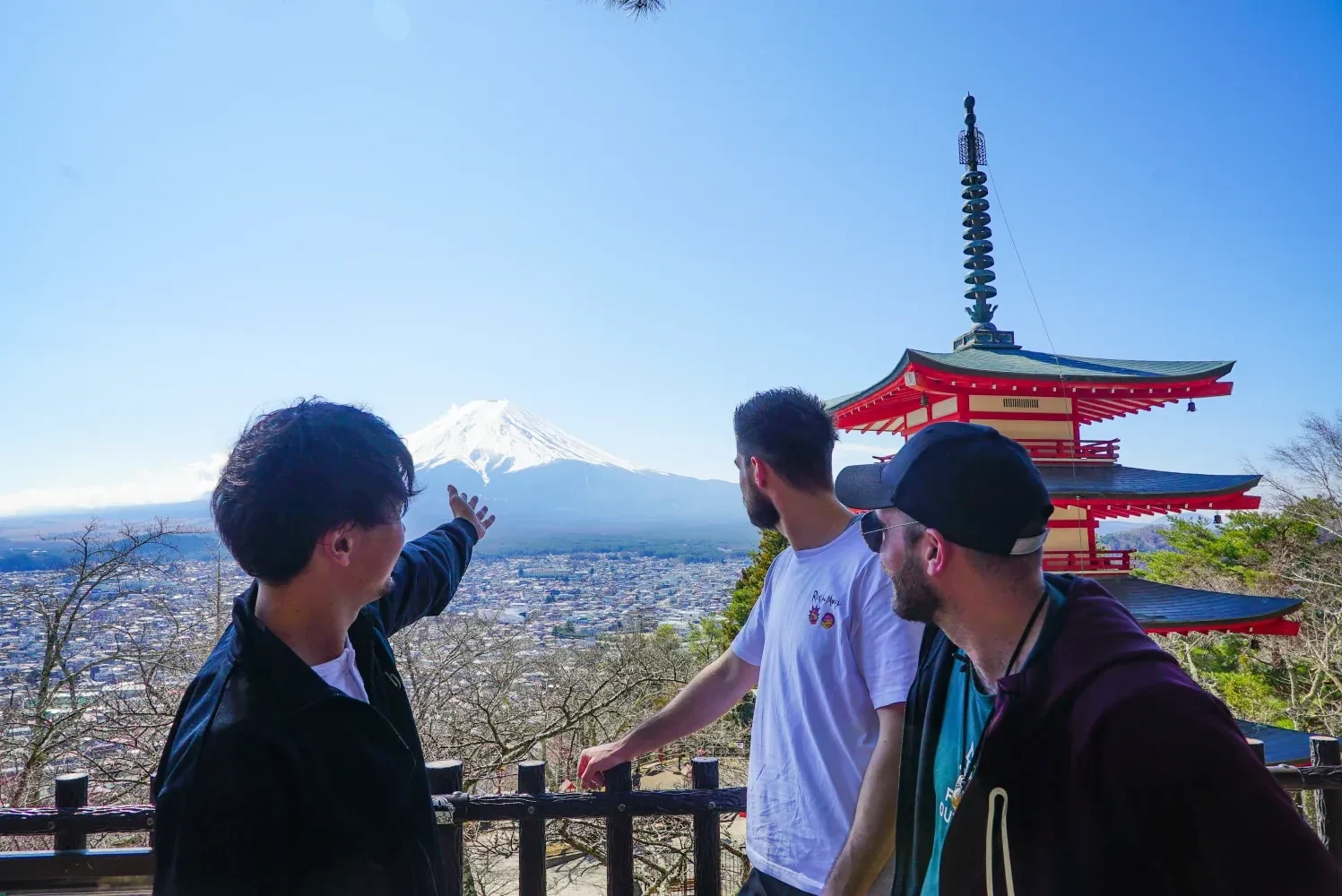
Best Practices for Photography
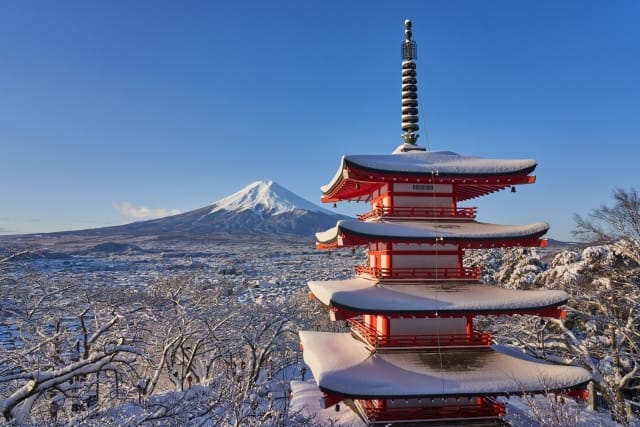
From over 10 years of Mt. Fuji photography experience, I'll share what I consider to be the most important shooting tips.
First, bringing a tripod is essential. Especially during morning, evening, or night shoots, the light becomes scarce, making handheld shooting difficult in many scenes. However, be sure to check in advance as there are places where use is restricted. I recommend checking beforehand.
Lens selection is also important. I always carry both wide-angle and telephoto lenses. Wide-angle lenses are useful when you want to capture Mt. Fuji together with the surrounding landscape, while telephoto lenses are great for capturing Mt. Fuji's details or shooting from a distance.
Checking the weather forecast is indispensable. I make sure to check multiple weather sites to understand cloud movements and visibility conditions. I also check sunrise and sunset times in advance and plan my arrival time at the shooting point.
Understanding the crowding situation at each spot is also important. Popular spots can be bustling with photographers from early morning. I always try to arrive 30 minutes to an hour ahead of time.
And most importantly, it's crucial to practice good manners that respect nature. As photographers, we need to strive to protect the environment of the shooting locations so that we can pass on the same excitement to the next generation.
Frequently Asked Questions
I receive many questions about Mt. Fuji photography. Here, I've compiled the most common questions and their answers. I've tried to provide specific advice based on my real experiences.
When is the Best Season for Mt. Fuji Photography?
November to May is the most recommended period. In my experience, during this time, Mt. Fuji is covered in snow, showing its most beautiful appearance. Especially in November, you can capture the luxurious combination of autumn foliage and snow-capped Mt. Fuji.
The cherry blossom season in early April is also a special time. You can shoot the perfect collaboration of cherry blossoms and Mt. Fuji at Arakurayama Sengen Park and around Lake Kawaguchi.
The autumn foliage season (late October to mid-November) is also not to be missed. The contrast between the autumn-colored trees and Mt. Fuji creates impressive photos.
In summer, clouds tend to cover the mountain more often, but it's also interesting to capture the bustling atmosphere during the mountain opening season or fireworks with Mt. Fuji. I find charm in continuing to shoot Mt. Fuji's different expressions in each season.
What Should I Do if Mt. Fuji is Not Visible?
This is a situation I often experience too. Mt. Fuji can be capricious, sometimes not showing itself for days. For such times, I recommend the following countermeasures:
First, plan a 2-3 day stay. If you have the flexibility to wait for weather changes, you're sure to encounter a wonderful moment. Even when the weather is bad, I visit the Mt. Fuji World Heritage Center or museums to learn about Mt. Fuji's culture and history.
Enjoying hot springs or local cuisine is also a good option. There are many attractive hot springs scattered around Mt. Fuji, allowing you to make the most of your waiting time.
I also recommend visiting nearby tourist spots like Oshino Hakkai. In fact, landscapes enveloped in sea of clouds or mist can also make impressive photos. I see the situation of "Mt. Fuji not being visible" as an opportunity to find new shooting themes.
Any Tips for Efficiently Getting Around Using Public Transportation?
I'll share an efficient route that I've actually tried. I recommend using Kawaguchiko Station as a base. The sightseeing buses departing from here can efficiently take you to major shooting spots.
However, make sure to check the bus schedules in advance. Pay special attention to operating hours if you're planning early morning or night shoots.
Consider using taxis as well. I often use them when I don't want to miss the best light in the early morning or for night shoots. Some taxi companies allow advance reservations, enabling planned shooting.
On good weather days, rental bicycles can be a convenient mode of transportation. The area around Lake Kawaguchi is relatively flat, making cycling comfortable. By cycling around, I've been able to find hidden spots that aren't on maps.
What Are the Precautions for Mt. Fuji Photography?
From years of shooting experience, I'll share some particularly important precautions. First, absolutely avoid trespassing on private property. Even if you find a great composition, it's strictly forbidden to enter private property without permission.
Regarding tripod use, always check in advance. In my early days, I unknowingly used one and was warned. Especially in tourist areas and crowded spots, use is often restricted.
Be cautious of encounters with wildlife. Especially during night or early morning shoots, there's a possibility of encountering wild animals like boars or deer. I always carry a headlamp and pay attention to my surroundings while shooting.
When going above the 5th station, be aware of altitude sickness. I always make sure to bring plenty of water and light snacks, and take frequent breaks. Preparing for sudden weather changes is also important, so bring warm clothing.
Lastly, and this is an absolute must, always take your trash with you. It's our responsibility as visitors to preserve the beautiful landscape of Mt. Fuji.
Throughout my over 10 years of Mt. Fuji photography experience, I continue to have new discoveries and encounter heart-racing moments. Mt. Fuji, showing different expressions in each season, truly provides us with unlimited shooting themes.
The 16 spots introduced in this article are all places I've visited many times and found truly wonderful. However, these are just a small part of Mt. Fuji's charm. I hope you all find your own encounters with Mt. Fuji.
The appearance of Mt. Fuji, changing with weather and time of day, sometimes doesn't go as planned. But because of that, the excitement when you encounter a wonderful moment becomes irreplaceable. With proper preparation and mindset, enjoy your wonderful Mt. Fuji photography journey!
